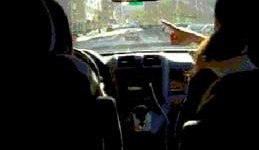Learn to Drive | Parents are Key to Keeping Their Teen Driver Safe
Car crashes are the greatest danger teens face as they learn to drive. But the majority of these crashes are preventable. Parents play a key role in teaching their teens how to drive a car and keeping them safe on the road. The Teen Driving Research team at The Children’s Hospital of Philadelphia (CHOP) and others are exploring ways to help parents teach their teens how to drive a car safely. Their research has found that parents can cut their teens’ crash risk in half by being actively involved as their teens learn to drive. Parents also need to set rules, be supportive and make sure their teens get proper and sufficient practice as they learn to drive.
The Teen Driving Research team at The Children’s Hospital of Philadelphia has compiled information for teens as they learn to drive. It is also for parents teaching their teens how to drive a car. The information has been assembled from clinicians, researchers, driving instructors, teens, educators, and others. The information helps guide parents and teens. It helps make learning how to drive a car, although challenging, a rewarding experience for both parents and teens.
Car crashes are the number one cause of death for teens. Teen drivers are involved in fatal crashes 4 times the rate of adult drivers. Two-thirds of teens killed in car crashes were not wearing a seatbelt. Talking and texting on a cell phone while driving are deadly distractions. Teen passengers are also a source of deadly distractions. Driver errors due to inexperience also contribute significantly to car crashes by teens. Therefore parents must teach their teen how to drive a car and avoid risky driving conditions. They must also practice with their teen as they learn to drive to develop driving skills that only come with experience behind the wheel.

Communication between parents and teens is necessary if teens are to learn to drive and limit their exposure to risk factors and other dangers. Communication is also necessary to set rules for teens to follow when driving. Parents must also notice and enforce positive driving behaviors. In a national survey by CHOP with thousands of high school students, the majority said their parents influence their driving behavior more than anyone else.
The book “3 Keys to Keeping Your Teen Alive: Lessons for Surviving the First Year of Driving” provides parents with the tools to help them become actively involved with their teen as they learn to drive. The book provides techniques and tools for keeping the lines of communication open between parents and teens. It also provides guidance in setting rules and noticing and enforcing positive driving behaviors. There are 25 structured lesson plans to help parents teach their teen driving skills along with the basic mechanics of driving. On-line instructional videos from experts also help teach teens how to drive a car safely.




